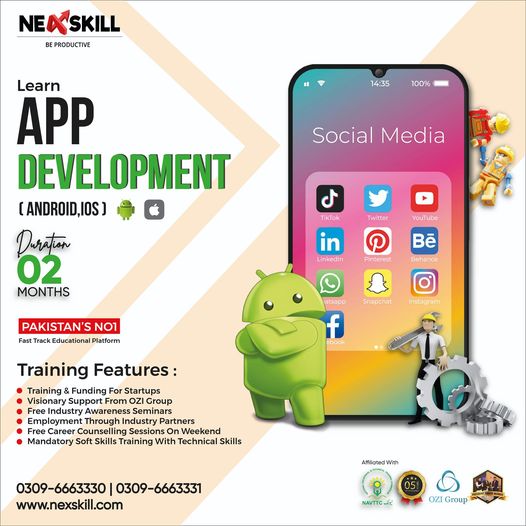
Mobile Application have become an essential part of our daily lives, serving various purposes from entertainment and communication to productivity and shopping. With the increasing demand for mobile apps, many businesses and individuals are venturing into app development. To meet user needs and capitalize on this booming market. However, building a successful mobile application involves more than just coding. It requires careful planning, design, and execution. In this article, we will explore the key steps for building a successful mobile application.
Step 1:
Define Your Objective
Before diving into app development, it is crucial to define your objective clearly. Ask yourself: What problem does my app solve? Who is my target audience? What unique features or benefits will my app offer? Understanding your objectives will help you make informed decisions throughout the development process and create an app that resonates with your target users.
Step 2:
Conduct Market Research
Market research is essential to identify your target audience, study competitors, and understand market trends and demands. So analyze similar apps in the market to identify their strengths, weaknesses, and opportunities for differentiation. Identify gaps or pain points that your app can address, allowing you to position it effectively and cater to the needs of your target audience.
Step 3:
Plan Your App Development Process
Creating a well-defined development plan is crucial for successful app development. Consider factors such as the platform (iOS, Android, or both) that you will target, the development timeline, and the resources required. Create a roadmap that outlines each step of the development process, from design and development to testing and deployment.

Step 4:
Design the User Interface and Experience (UI/UX)
User interface (UI) and user experience (UX) design are vital aspects of building a successful mobile application. So focus on creating an intuitive and visually appealing interface that engages users and provides a seamless experience. Consider the layout, colors, typography, navigation, and interactions within the app to ensure an enjoyable and immersive user experience.
Step 5:
Develop the App
The development phase involves translating the design into a functional mobile application. It requires expertise in programming languages such as Swift for iOS and Java or Kotlin for Android. So it collaborate with developers to build the app’s features and functionalities, integrate APIs, and ensure the app performs optimally across different devices and operating systems.
Step 6:
Test Your App
Thorough testing is crucial to identify and fix any issues or bugs before releasing your app to users. Conduct rigorous testing to ensure the app’s stability, functionality, usability, and compatibility across various devices and operating systems. Regularly solicit feedback from testers or focus groups to gather valuable insights for further improvements.
Step 7:
Publish and Promote Your App
Once your app passes the testing phase, it’s time to publish it on the respective app stores (Apple App Store for iOS and Google Play Store for Android). So pay attention to each platform’s guidelines and requirements for submitting your app. Consider implementing an effective marketing strategy to create awareness, generate buzz, and drive downloads for your app.
Why Choose Nexskill for App Development Course?
Building a successful mobile application requires expertise and up-to-date knowledge in app development. So Nexskill offers comprehensive app development courses that equip individuals with the necessary skills and insights to excel in this field. Whether you are a beginner looking to learn the basics or an experienced developer seeking to expand your knowledge, Nexskill provides hands-on training, industry-experienced instructors, and real-world projects to enhance your app development skills.
Investing in an app development course at Nexskill offers numerous advantages. You gain a strong foundation in app development principles, learn in-demand programming languages, and so master the tools and frameworks required to build high-quality mobile applications. Additionally, Nexskill promotes a collaborative learning environment that fosters creativity and encourages students to explore innovative ideas and best practices in app development.
Conclusion
In conclusion, building a successful mobile application involves several key steps, from defining your objective and conducting market research to designing, developing, testing, and promoting your app. By following these steps and investing in an app development course at Nexskill, you can enhance your skills, stay ahead of industry trends, and build mobile applications that captivate users and achieve success in today’s competitive app market.

